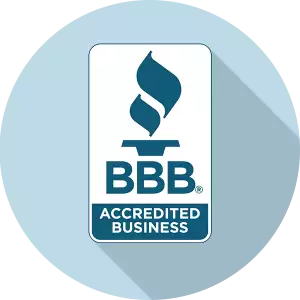Charlottesville Virginia Bat Removal and Bat Control
Virginia Professional Wildlife Removal Services, LLC.
A full-service animal wildlife trapping, removal and pest control company – Licensed and Insured!

Charlottesville Virginia Bat Removal and Bat Control
Virginia Professional Wildlife Removal Services, LLC.
A full-service animal wildlife trapping, removal and pest control company – Licensed and Insured!

Charlottesville VA Bat Removal & Control – Call (804) 457-2883
Expert Bat Removal in Charlottesville, VA
Bat removal in Charlottesville, VA can be a complicated process. Bats are small mammals that can enter openings as tiny as 3/8″. Their droppings, known as bat guano, can cause a respiratory disease called histoplasmosis. Our bat removal experts in Charlottesville, Virginia can safely and humanely remove bats from attics, walls, vents, soffits, eaves, and other areas of your home. We also provide animal damage repairs and animal control services throughout Charlottesville and surrounding areas.
Why Choose Us for Bat Removal in Charlottesville, VA?
- Certified Experts: Our team is Bat Standards Compliant Certified for Charlottesville bat removal.
- Humane Methods: We use safe and effective bat exclusion techniques.
- Trusted Service: Recommended by Bat Conservation International as Bat Exclusion Professionals.
- Comprehensive Solutions: We offer bat exclusions, individual bat removal, and bat guano clean-up services.
Understanding Bat Removal & Control
The Importance of Professional Bat Removal
Bats are beneficial animals, but when they invade your home, they can cause significant problems. Our team ensures that bats are excluded from buildings in a safe and effective manner. With our extensive knowledge and experience, we handle bat guano clean-up techniques and procedures efficiently.
Health Concerns Associated with Bats
Rabies
Bats can transmit rabies, a viral infection that is nearly always fatal once symptoms occur. Prompt vaccination following exposure can prevent the disease. Bats are not asymptomatic carriers; they become ill and can transmit the disease during this period.
Histoplasmosis
Histoplasmosis is a common lung disease caused by a fungus found in bat guano. Inhalation of spores can lead to infections. This disease is particularly endemic to areas with bat roosts.
Damage Identification & Prevention
Common Entry Points for Bats
Bats often enter buildings through:
- Roof edges and valleys
- Eaves and gables
- Chimneys and attic vents
- Loose-fitting doors and windows
- Gaps around conduits and utility vents
Signs of a Bat Infestation
Look for:
- Droppings (guano) near entry points
- Noises in the attic or walls
- Stains around openings
Safe & Humane Bat Exclusion Techniques
Our Exclusion Process
We do not perform bat exclusions from May through July due to the birthing season. Instead, we schedule site visits to plan and execute humane removal methods.
Handling a Bat in Your Home
If a bat is in your house:
- Isolate the bat to one room if possible.
- Call Virginia Professional Wildlife Removal Services at (804) 457-2883.
Call Us Today for Expert Bat Removal
If you have a bat colony in your attic, contact Virginia Professional Wildlife Removal Services. We will safely remove the bats and ensure they do not return. Don’t trust an inexperienced bat removal company; let our top-rated team handle it right the first time.
Service Areas in Virginia
We provide bat removal and control services throughout Virginia, including:
- Afton, Albemarle County, Alexandria, Amelia County, Annandale, Arlington, Ashburn, Ashland, Barboursville, Bellwood, Belmont, Bensley, Bermuda Hundred, Bon Air, Boyd Tavern, Brandermill, Bumpass, Burke, Central VA, Centreville, Chamberlain, Charlottesville, Chesapeake, Chester, Chesterfield County, Colonial Heights, Crozet, Cuckoo, CVille, Dale City, Doswell, Dumbarton, Earlysville, East Highland Park, Enon, Ettrick, Fairfax, Fair Oaks, Ferncliff, Fluvanna County, Fredericksburg, Genito, Glen Allen, Glenora, Goochland County, Gordonsville, Gum Spring, Hadensville, Hampton, Hampton Park, Hanover County, Harrisonburg, Harrogate, Hening, Henrico County, Highland Springs, Hopewell, Innsbrook, Jefferson Davis, Kents Store, Keswick, Lake Anna, Lake Monticello, Lake Ridge, Lakeside, Laurel, Leesburg, Lewiston, Lignum, Locust Grove, Louisa County, Maidens, Manakin, Manakin-Sabot, Manassas, Manchester, McLean, Montrose, Motoaca, Meadowbrook, Mechanicsville, Midlothian, Mineral, Moseley, Newport News, Norfolk, North Courthouse, Northern Virginia, North Garden, NoVA, Oilville, Orange County, Palmyra, Pantops, Petersburg, Portsmouth, Powhatan County, Reams, Reston, Richmond, Richmond County, Robious, Rockville, Rockwood, RVA, Salisbury, Sandston, Sandy Hook, Scottsville, Shannon Hill, Short Pump, South Rockwood, Spring Run, Staunton, Stoney Point, Suffolk, Tidewater, Troy, Tuckahoe, Va, Varina, Virginia, Virginia Beach, Waynesboro, Williamsburg, Winchester, Winterpock, Woodlake, Wyndham, and the surrounding areas of Virginia.
For additional information on bats, check out our Virginia Bat Facts page.
Contact Us Today at (804) 457-2883 for Professional Bat Removal Services!
Please Complete Our Simple Contact Form Below:
Our Main Bat Removal Page
VPWRS Can Solve Your Problems!
- Scratching Noises In Your Attic, Walls, Or Crawlspace?
- Unwanted Animal Wildlife In Your Home, Business or Property?
- Bats In Your Attic?
- Birds In Your Dryer And Bathroom Vents?
- Problem Bird Or Bat Infestation?
- Animals In Your Chimney Or Fireplace?
- Digging In Your Lawn Or Under Your House, Deck Or Garage?
- Dead Animal Problems?
- Animal Odor Problems?
- Chewing Sounds In Your Attic Or Crawl Space?
- Animals Damaging Your Wiring, Insulation, Fascia, Soffits, And The Wood In Your Home?
- Animal Feces Removal?
- Attic Restorations And Clean-Up Needed?
VPWRS Extensive Services
Virginia Professional Wildlife Removal Services provides nuisance wildlife removal, animal control, predator control, pest control, nuisance wildlife exclusion, and wildlife clean-up services.
We have experience handling bats, beavers, birds, Canada geese, chipmunks, coyotes, deer, foxes, groundhogs, mice, moles, raccoons, rats, opossums, otters, skunks, squirrels, snakes, voles, muskrats, bobcats, Copperhead snakes, pigeons, and other species of Virginia wildlife.
We operate our business within accepted industry standards and best practices, and in accordance with local, state, and federal laws.
Our connections on the ground and the net.
CONTACT INFO
Tel: (804) 457-2883 or Toll-Free at (877) 828-3878
DIRECT MESSAGE
FOLLOW US
Facebook
BBB Profile
Angies List
Instagram
